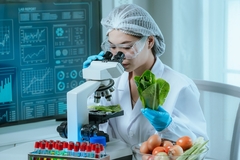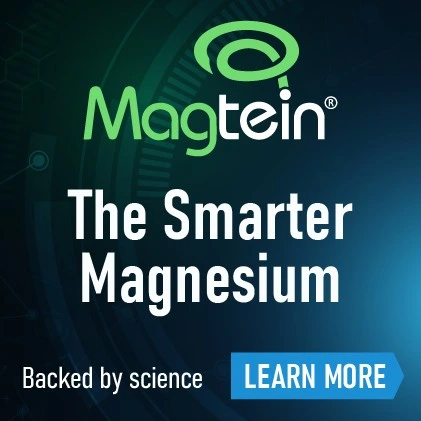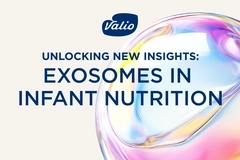Inside Nestlé’s open innovation: How the R+D Accelerator and start-ups drive the future of nutrition
Key takeaways
- A Nestlé research lead details how collaborations between start-ups and corporations bridge agility and speed with resources and strategic perspective.
- Food innovation is shifting from reduction (cutting fat and sugar) to enrichment, focusing on nutritional density (proteins, micronutrients, and postbiotics).
- Personalized nutrition and consumer empowerment are key trends, but the industry must balance customized solutions with commercial viability to serve everyone.
The global food system is rapidly transforming, requiring open innovation to meet demands for next-generation products that are more nutritious and science-backed. Nestlé initiatives like the Nestlé R+D Accelerator are driving fundamental changes in food by pairing agile start-ups with its internal scientific research.
In this exclusive interview, Nutrition Insight speaks to María Eugenia Barcos, start-up program lead at Nestlé Research, who offers insight into the crucial complementary roles played by nimble start-ups and established corporations.
She highlights the essential nature of open innovation and collaboration across the entire ecosystem, as well as key trends — including the move toward personalized nutrition — that will dominate the food industry in the coming decade.
What is the scope of impact of start-ups in the food system?
Barcos: I think we both play a complementary role. Start-ups, especially early-stage ones, have the power of moving with tremendous agility and speed, which we [corporations] cannot match in some spaces. This is the start-up’s role — to explore and learn in a very fast loop, focusing on things that may not fit our immediate priorities.

Many times, we simply do not have the bandwidth to fail so many times. That’s where we complement each other — the different actors in the ecosystem. Corporations often have a larger picture of what it takes for a solution to be realized. The start-up can focus on the immediate next step for their discovery to eventually see the light of day. It’s very unlikely that you can do both things exactly at the same time. That’s why you need both.
I was speaking with a very early-stage start-up today, and I told them: “You have the power to move with tremendous agility and speed in areas where we simply cannot.” This is the key role of a start-up. They have the ability to explore quickly, operating with a very fast learning loop for certain concepts that don’t fit into our immediate corporate priorities.
Fundamentally, we believe in collaborative work. This extends far beyond just start-ups; it includes public entities, peer companies, consumers, and society as a whole. This is how we’ve always operated. Collaboration with start-ups is simply one leg of our open innovation approach — they are a critical actor in the ecosystem.
In my role at Nestlé, I identify areas that we internally want to accelerate or areas we decide are better to pursue with externals. I then go and identify start-ups with whom we can collaborate to accelerate our fundamental discoveries.
How does your company approach innovation?
Barcos: Fundamentally, the focus in nutrition has shifted. Before, we focused on reduction — cutting down on sugar, salt, and fat. Now, for quite some years, the goal has been to increase nutritional density and quality.
This involves more than just one element. For example, take note of the different types of protein and consider how to personalize them to individuals or groups. This approach will expand to many other nutrients as well. It’s about how to enrich the formula within the food matrix — considering not only proteins but also micronutrients, probiotics, and postbiotics.
I believe the story is no longer, “How can we get rid of things?” but rather, “How can we enrich?” This involves utilizing materials and processes that were previously underestimated.
Take fermentation, for example. We’ve used it for years, but the potential lies in leveraging it in a much more powerful and sustainable way to create food. That is where I see the greatest potential.
What innovations are you exploring that align with your priorities in health, sustainability, or the consumer experience?
Barcos: The underlying principles are not new. We are all trying to strive for better longevity, help people manage their weight, and help them get a healthy, nutritious diet. These core principles have not changed.
What has changed is the execution and the tools we have to deliver that. It’s about adapting to changes in delivery methods, portion sizes, packaging, and how we effectively communicate and inform the consumer. These are the active areas.
What key themes will dominate food innovation over the next decade?
Barcos: Consumers will be much more able to request higher quality and better inform their decisions. They will have so much information available — which will be overwhelming — but it will allow them to ask themselves different types of questions. This, along with the acceleration that technology will bring, is critical.
The ability to drive personalized solutions is another major area we will have to adapt to. This means moving from a one-on-one solution to solutions for a specific group or consumer category.
This is a challenging balance, because personalized solutions also need to make sense commercially and be able to address all populations. If you go too much into one niche or the other, it’s not effective. The industry will have to balance being specific without excluding anyone.
Ultimately, the core mission is the power of the ecosystem and the importance of truly being connected and having honest conversations. We are all united in the same mission: to bring better nutrition to all people.
















